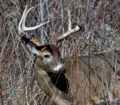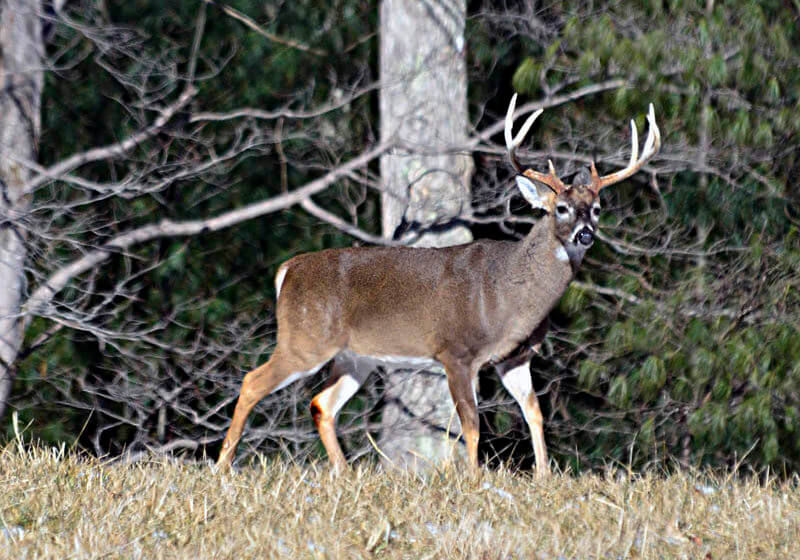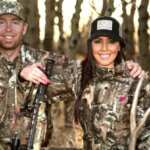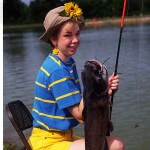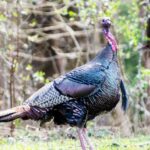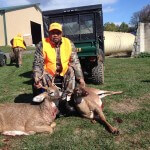Editor’s Note: If the South has another winter like the last couple of ones, southern hunters and perhaps other deer hunters across the U.S. will have to change their deer-hunting tactics. Or, they’ll continue to eat and sleep more in their deer stands. What do you do when the woods have too-much food in them, and the temperatures climb high causing the deer to refuse to move? Many deer hunters below the Mason-Dixon Line have faced this problem the last couple of years, with scientists reporting that winter has lasted 3 fewer weeks than usual across the U.S.
 Let’s look at some strategies to move bucks when bucks don’t want to, don’t need to and won’t move.
Let’s look at some strategies to move bucks when bucks don’t want to, don’t need to and won’t move.
Using the D Word:
Most purist deer hunters don’t use the D (drive) word. They often feel that when you drive deer you’re not really hunting. But hunters will find man-drives one of the most-effective ways to move deer that refuse to move. Two different types of man-drives work well – the one-man deer drive and the cowboy deer drive. However, I believe the one-man drive pays more buck dividends than the cowboy drive does. The one-man drive relies more on the power of human odor to force deer to move than it does on the sights and sounds of the hunters.
When utilizing a one-man drive, standers move silently to take their positions on the downwind side of a thick-cover area where they believe bucks have bedded. At the appointed time, one driver starts walking back and forth across the thicket, as stealthily as possible. The driver prefers not to spook the deer but wants the bucks to recognize the presence of a human upwind of the bucks’ bedding place. If the hunter occasionally steps on a twig or breaks a limb, the deer can confirm with his ears what his nose has reported. Usually an older-age-class buck will stand up in his bed cautiously and quietly and begin to slowly sneak out of the cover and away from the oncoming driver. This technique gives the hunters a walking shot at the buck as he comes out of the thick cover. Standers even may have the good fortune of taking their shots when the buck is standing still, looking back in the thicket to try to spot the hunter.
 You can conduct this type of drive with as few as two hunters – one driver and one stander – or as many as 12 hunters. The critical factors to the success of the hunt include:
You can conduct this type of drive with as few as two hunters – one driver and one stander – or as many as 12 hunters. The critical factors to the success of the hunt include:
* setting the standers up downwind of the bedding area;
* giving the standers plenty of time to move quietly to their stand sites before the drive starts, so they don’t spook the deer in the thicket;
* making certain the driver moves very slowly and quietly and remembers that his scent, not his sound, will cause the deer to move;
* checking that all hunters wear hunter orange, so they easily can spot each other; and
* moving hunters out of an area after a drive as quietly as they’ve moved into it. Even if you don’t bag a buck, or if you do bag a buck, you can drive that same section of land again a week later, if you don’t spook all the deer out of there and have left very little human odor near this bedding site.
Two to five hunters often can drive six- to 10-bedding sites in one day of hunting. You’ll spot many more deer and have a greater chance of taking an older-age-class buck when you use human odor to move bucks than if you sit in your tree stand and depend on the deer’s natural urge to move.
 The cowboy deer drive utilizes standers in a horseshoe-shaped formation around a deer’s bedding area. Drivers move into the bedding region screaming, hollering and making all the racket they can – like cowboys rounding up cattle – to try to force the deer to flee. This tactic will upset a bedding area thoroughly. Although you may take an older-age-class buck the first time you drive a section of land with this strategy, more than likely you’ll blow the buck out of that bedding area, and he’ll never return there that season. This method primarily works for the shotgun hunter, particularly the ones shooting buckshot and open sights. When a buck moves out of a region where hunters have put on a cowboy deer drive, more than likely that buck will run hard as he dodges trees and lead.
The cowboy deer drive utilizes standers in a horseshoe-shaped formation around a deer’s bedding area. Drivers move into the bedding region screaming, hollering and making all the racket they can – like cowboys rounding up cattle – to try to force the deer to flee. This tactic will upset a bedding area thoroughly. Although you may take an older-age-class buck the first time you drive a section of land with this strategy, more than likely you’ll blow the buck out of that bedding area, and he’ll never return there that season. This method primarily works for the shotgun hunter, particularly the ones shooting buckshot and open sights. When a buck moves out of a region where hunters have put on a cowboy deer drive, more than likely that buck will run hard as he dodges trees and lead.
To learn more about hunting deer with John E. Phillips’ Amazon Kindle eBooks, print books and Audible books (the latest Audible is “How to Hunt Deer Like a Pro”) and Nook books, click here at https://johninthewild.com/books/#deer. You can type in the name of the book and download it to your Kindle, and/or download a Kindle app for your iPad, SmartPhone or computer. For a free download on how to make jerky from venison to provide a protein-rich snack, choose “How to Prepare Venison Jerky: The Ultimate Snack Food” at johninthewild.com/free-books.


